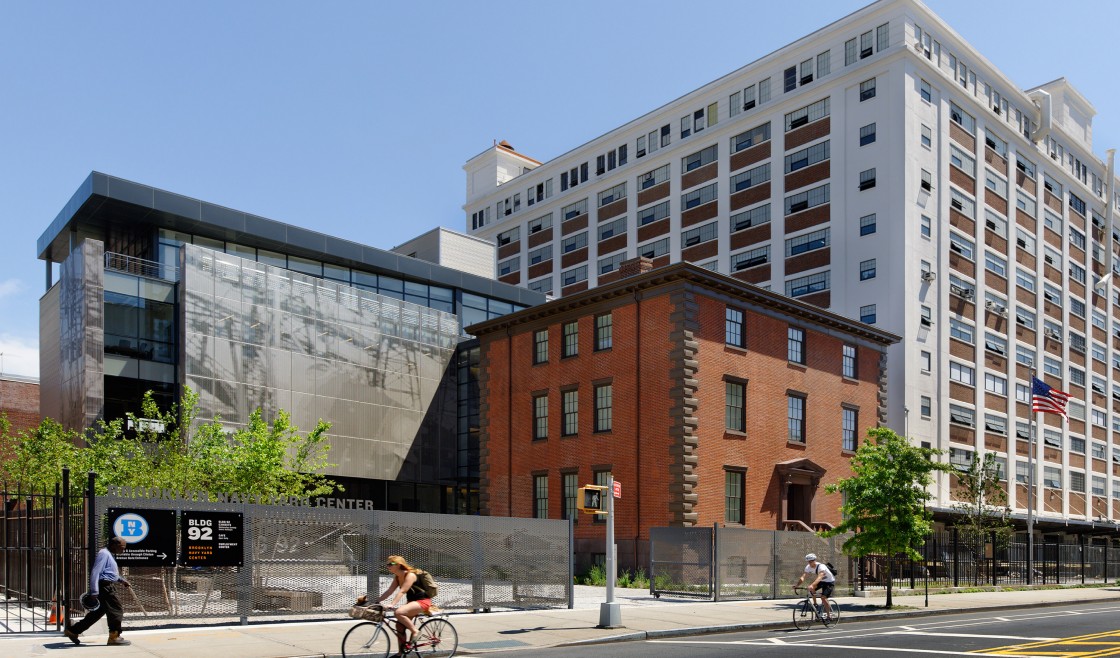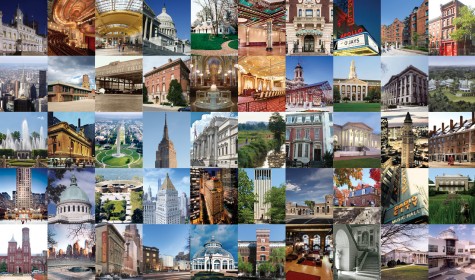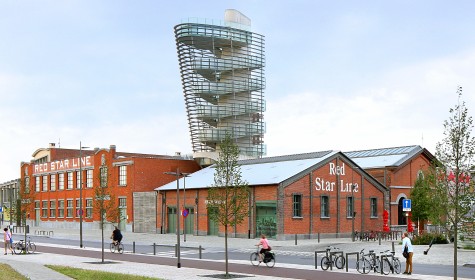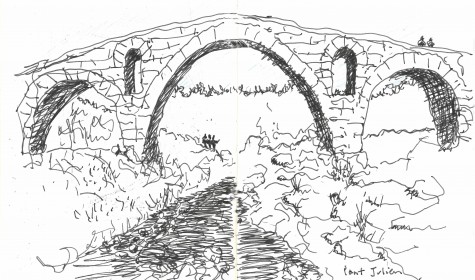New York’s Landmarks Law at 50: Reflections of a Preservationist

Cleary Larkin worked as an architect for BBB from June 2007 to May 2015. She is currently pursuing a PhD in Urban Planning at the University of Florida, where she intends to focus on the development of local preservation strategies within early 20th-century city planning. Here she considers how preservationists, designers and planners can better collaborate.
New York City is currently celebrating the 50th anniversary of the Landmarks Law, enacted in April 1965. Several public programs, including the exhibition “Saving Place” at the Museum of the City of New York (through January 3, 2016) have commemorated the accomplishments of the past fifty years, mourned the loss of irreplaceable architectural gems, and endeavored to educate the general public on the history and development of the Landmarks Law. Public discourse has focused on the current landmarks process and more recent landmarks “controversies,” but has reached no solid conclusion about what lies ahead for the process and the state of physical change in the city.
While it is impossible to predict the future, we should enthusiastically support the process of inquiry. Working within the context of existing buildings, we often use research and history as a foundation for our design process: we look backwards in order to move forward. It makes sense that we do the same for the historic preservation process. How can we examine the last fifty years through an analytical lens to learn from the past and determine how (or if) the issues have changed, so that we can have another meaningful fifty years of dialogue about making place? What follows is not a list of solutions or suggestions for change, simply the beginnings of open-ended thoughts that I hope spark a meaningful dialogue to help guide another fifty years of making place.
The Past 50
The definition of a landmark has always been a matter of antiquity (history) and aesthetics. Essentially, this is the essence of any debate and discussion about landmarks, as history and aesthetics will always be interpreted relative to the era from which they are viewed - therefore they are ever changing - and taste will always be subjective.
Further challenging the mandate of the Landmarks Preservation Commission (LPC), they were tasked with protecting landmarks not only for their historic and architectural character, but also for other intangible values such as contribution to the experience of place, for tourism and civic pride, for cultural heritage.
Lastly, and possibly the only quantifiable attribute, landmarks have been an acknowledged boon to the city economy and property values, yet who determines which value is of greatest use to the city - that of real estate (the best and highest use?) or that of culture and place?
How can we better define the intangibles? How can we better educate professionals and the public on the best way to objectively assess a subjective idea?
The context in which the Landmarks Law was developed was very much one of crisis, as buildings were being demolished before people had any power to stop it. The language of landmarks legislations had to be somewhat vague in order to be approved as quickly as possible and, especially with respect to the Secretary of the Interior’s Standards, to encompass a multitude of architectural typologies.
I have heard the New York City law described as “triage,” furthering the notion of preservation as a response to an emergency situation. It seems to me that this mid-century “state of crisis” has led to the characterization of preservationists as being in a constant state of defense and reactionary against any change to the built environment. (I think the word “preservation” itself doesn’t help and would encourage the profession to come up with a more positive word for what we are doing.)
City planning, unlike the “reactive” state of preservation, is often considered the pro-active first step in creating a framework for development. In many cities, the landmarks legislation and staff is housed within the Department of City Planning, and the two often share at least a common understanding of broad goals if not larger agenda.
In New York City, for better or worse, the LPC and the City Planning Commission (CPC) are two separate entities. The LPC and CPC together have the largest effect on the shape of our city, yet of all the anniversary events that I attended, City Planning was not at the table to be part of the discussion. I would ask if the goals of the two commissions are actually as divergent as some may think or is it just that the means and methods of each have been historically different? Historic preservation is a planning tool in its own right. Should we re-evaluate which other planning tools can be considered within the realm of historic preservation? Once we define them, can we discuss how planning and preservation commissions can collaborate further, so that we aren’t discussing landmarks in terms of reaction but in terms of proactivity?
The Present
In reading the history of the Landmarks Law and the original mandate of the Landmarks Preservation Commission, we see that the goals, needs and challenges of the city are still very much the same: affordable housing, livable communities, respect for history and culture, and economic growth.
New York City has always been at the forefront of development and design in the United States, but this forward momentum makes it difficult to take a pause and thoroughly re-assess how to address our current needs. We only have time to keep moving forward the same way we always have. But are the processes and tools we have used for the past fifty years still applicable? Or are there newer strategies that can be developed? How can we give ourselves a little more time to ensure we are making the best decisions for right now, much less the future?
I find it frustrating that the players in the game are often negatively stereotyped by their perceived interest or agenda. The reality is that we need everyone at the table to make our city work. We can have positive forward movement without resorting to role-playing. Surely we as professionals can acknowledge that not everything is black and white and perhaps what works in one situation may not work in another. Cities need the intra-disciplinary thinking that collaboration between the professions can bring to the table.
The Next 50
New York City is perhaps the most challenging city in the United States for architects, planners, and preservationists to work. Why shouldn’t we be the ones to tackle the hard questions? Can we make some time in our busy schedules to pause and assess before plunging ahead? Can New York City take the lead for the next fifty years as well?
We can branch out and embrace the knowledge that cities across the United States have developed. We live in a world that abounds with new technology. How can we use that tool to connect city leaders, designers, planners and advocates and encourage knowledge sharing? Can we create a living database of what works and what doesn’t?
We should continue to question our process and history and remember the project is not over when the district is designated or the building is restored. Nor should preservation and planning laws be considered complete simply because it has been fifty years or more.
How do we re-assess the local and national preservation language that was developed fifty years ago? Is it still relevant? Does it work? This is not a critique of the brilliant minds that worked tirelessly to develop it, but instead an acknowledgement that times change and we need to change with them.
Related


